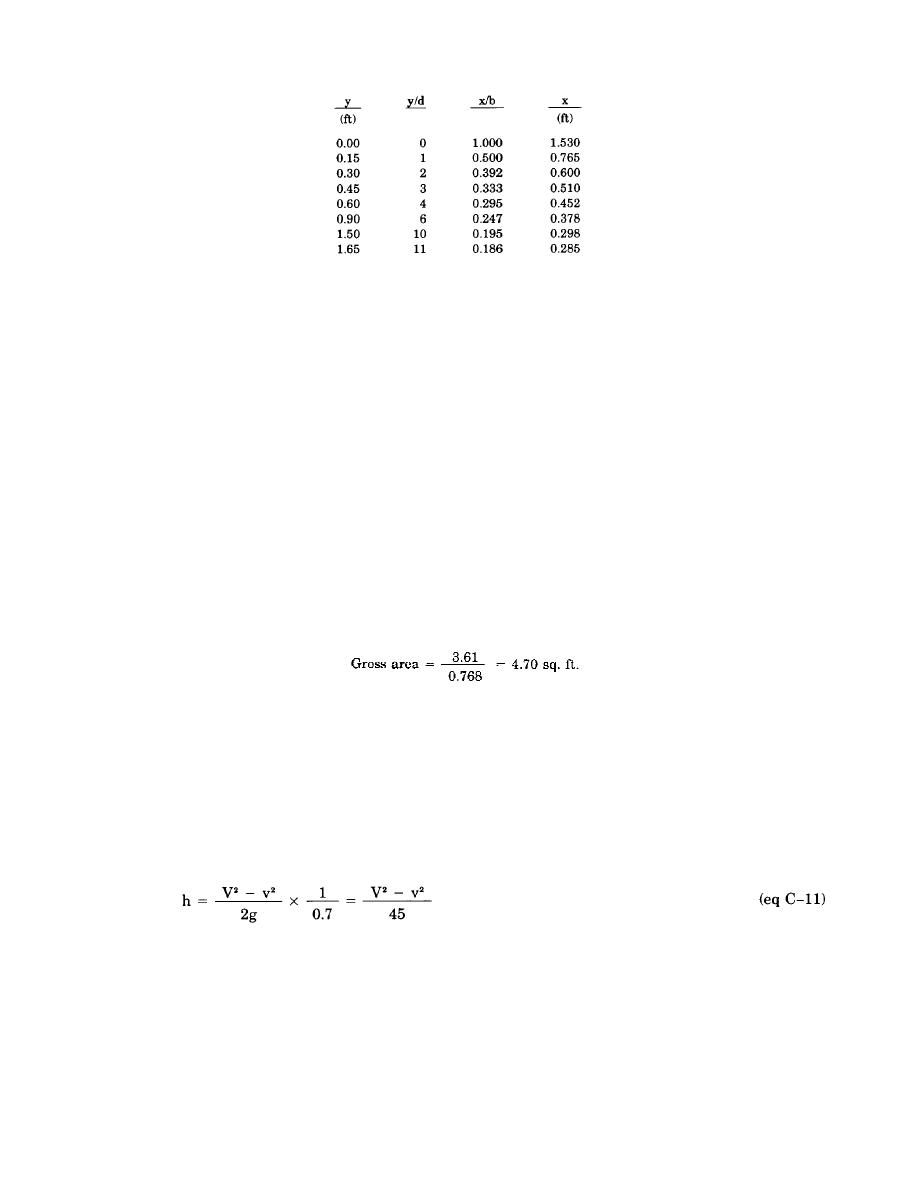
TM 5-814-3/AFM 88-11, Volume III
The above tabulation indicates that the trial design is satisfactory.
(2) Bar screen. (Refer to para 10-2b.)
Assumptions:
Maximum daily flow = 4 mgd;
Maximum storm flow = 7 mgd;
Maximum allowable velocity through bar rack for maximum daily flow = 2 fps.
Then, using the design procedure in the preceding paragraph:
Maximum daily flow = 4 1.547 = 6.188 cfs;
Maximum storm flow = 7 1.547 = 10.829 cfs.
Since Q = Av, 6.188 = A 2, and the net area A through the bars is 3.094 sq. ft. For a maximum allowable
velocity through the bar rack of 3 fps during maximum storm flow, the net area through the bars must be
10.829/3 = 3.61 sq. ft. The gross area will be based on the larger of the two net areas (in this case, 3.61 sq.
ft.). A rack consisting of 2-inch 5/16-inch bars, spaced to provide clear openings of 1 inch, has an efficiency
of 0.768 (table 10-1), yielding:
(3) Wastewater depth. The channel width in this case might be established at 3 feet; in which case, the
water depth would be 4.70/3.0 = 1.57 feet. This is a theoretical water depth which may be affected by subse-
quent plant units. For instance, a grit chamber may follow the screen chamber and be of such design that a
head may build up, the effect of which would be observed in the screen chamber. This is particularly true if
the sewage flow by pipeline from the screen chamber to the grit chamber and the flow in the grit chamber
are subject to controlled velocity. A screen chamber may be followed immediately by a wet well; in which
case the sewage depth, especially at the low flows, would be less than that computed. In fact, it is sometimes
necessary to increase the sewage depth by installing stop planks across the channel behind the screen. The
planks serve as a weir, and the head built over this impromptu weir further serves to increase the sewage
depth in the channel. The head loss through a bar rack is computed from the formula:
where
h=
head loss in feet;
V=
velocity above rack;
v=
velocity above rack;
g=
acceleration due to gravity (32.2 ft/sec/sec);
or
= 0.0222 (V2 - v2).
h
C-12


 Previous Page
Previous Page
